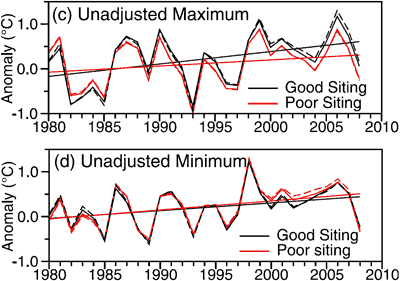
Figure 1. Annual average maximum and minimum unadjusted temperature change calculated using (c) maximum and (d) minimum temperatures from good and poor exposure sites (Menne 2010).
The website surfacestations.org enlisted an army of volunteers to photograph US surface temperature measurement stations and document stations located near parking lots, air conditioners, or anything else that might impose a warming bias. They found that 89% of the stations did not meet the US weather service siting criteria in one way or another. That is not good. Does this prove that a US warming trend is just the artificial influence of parking lots and air conditioners on the temperature record coming from bad stations?
No. Actually, an analysis shows that good and bad stations show very similar trends for temperature over time. The chart below compares data from stations that surfacestations.org identified as good, as well as bad stations. Notice that good stations track very closely to bad stations, and actually the good stations show more of a warming trend!

Figure 1. Annual average maximum and minimum unadjusted temperature change calculated using (c) maximum and (d) minimum temperatures from good and poor exposure sites (Menne 2010).
The volunteers from surfacestations.org deserve credit for pointing out siting problems of the US Weather Service temperature measurement stations. Unfortunately the fact that good and bad stations show the same upward trend proves that warming in the US is not just a measurement problem. Temperatures are trending upward around the globe, not just in the US. Microsite influences on temperature measurements in the US can't explain the US temperature rise, much less the global rise.
This post is the Basic version (written by Jim Meador) of the skeptic argument It's microsite influences. We're currently writing plain English versions of all the skeptic rebuttals. If you're interested in helping with this effort, please contact me.
Posted by Jim Meador on Tuesday, 31 August, 2010
 |
The Skeptical Science website by Skeptical Science is licensed under a Creative Commons Attribution 3.0 Unported License. |